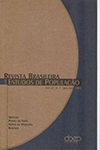Vulnerabilities and risks: between geography and demography
Keywords:
Risks, Natural hazards, Sociodemographic vulnerability, Population and environmentAbstract
Among the different trends in the study of risks, a number of different sciences use the same category in different ways, each related to its own ontological pre-suppositions. But these fields communicate very little with one another. This study aims at approximating two of these areas of study that have shown similar concerns and that can mutually strengthen one another, namely, geography and demography. Geography was one of the first disciplines to include risk in its environmental dimension and has had broad experience in simultaneously focusing on social and natural dynamics. Demography, on the other hand, runs up against greater difficulties because only recently has it incorporated the environmental dimension into its scientific scope. In addition, both have brought the concept of vulnerability into their conceptual framework as complementary to that of risk. Geographers understand vulnerability as a more symbiotic form of the relationship between society and nature, whereas demographers give it a strong socioeconomic component. In this regard, the conceptual discussion on risks and vulnerabilities, in its attempt at approximating these two fields, is a way of conceptually advancing and strengthening the different approaches to empirical work.Downloads
Downloads
Published
How to Cite
Issue
Section
License
Papers published in Rebep are original and protected under the Creative Commons attribution-type license (CC-BY). This license allows you to reuse publications in whole or in part for any purpose, free of charge, even for commercial purposes. Any person or institution can copy, distribute or reuse the content, as long as the author and the original source are properly mentioned.

